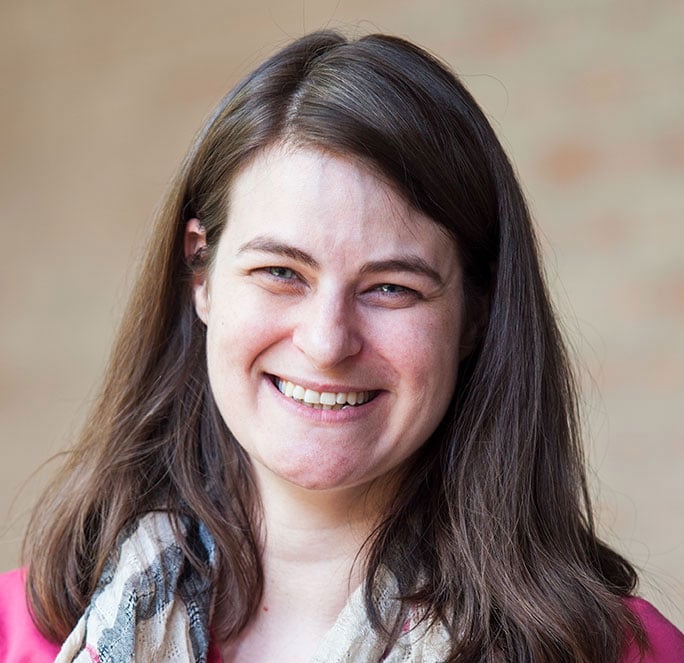Let us Lectio: "My Lord and My God"

Doubting Thomas by Guercino, 17th Century.
Second Sunday of Easter, Divine Mercy Sunday, April 28, 2019
Steps to Lectio Divina
Start by using these steps to reflect on the Scripture verse. Then read my meditation slowly.
Lectio: Having asked for the grace to hear God's word, read the passage twice.
Meditatio: During the second reading, pause whenever so moved and reflect on a word, a sentence, or an image that strikes you.
Oratio: Speak directly to God, and open your reflection to Him.
Contemplatio: Listen contemplatively for any response God might choose to make. Remember that God responds to us at times with loving silence.
The Scripture
From the Gospel for April 28, 2019 Divine Mercy Sunday (John 20:19-31)
On the evening of that first day of the week,
when the doors were locked, where the disciples were,
for fear of the Jews,
Jesus came and stood in their midst
and said to them, "Peace be with you."
When he had said this, he showed them his hands and his side.
The disciples rejoiced when they saw the Lord.
Jesus said to them again, "Peace be with you.
As the Father has sent me, so I send you."
And when he had said this, he breathed on them and said to them,
"Receive the Holy Spirit.
Whose sins you forgive are forgiven them,
and whose sins you retain are retained."
Thomas, called Didymus, one of the Twelve,
was not with them when Jesus came.
So the other disciples said to him, "We have seen the Lord."
But he said to them,
"Unless I see the mark of the nails in his hands
and put my finger into the nailmarks
and put my hand into his side, I will not believe."
Now a week later his disciples were again inside
and Thomas was with them.
Jesus came, although the doors were locked,
and stood in their midst and said, "Peace be with you."
Then he said to Thomas, "Put your finger here and see my hands,
and bring your hand and put it into my side,
and do not be unbelieving, but believe."
Thomas answered and said to him, "My Lord and my God!"
Jesus said to him, "Have you come to believe because you have seen me?
Blessed are those who have not seen and have believed."
Now Jesus did many other signs in the presence of his disciples
that are not written in this book.
But these are written that you may come to believe
that Jesus is the Christ, the Son of God,
and that through this belief you may have life in his name.
Reflection
The Gospel acclamation of Easter Sunday ends with Mary Magdalene alone at the empty tomb of Jesus. The readings of the Easter Octave highlight the three times that Jesus reveals Himself to the disciples after the resurrection.
In these Easter proclamations, Mary, the disciples, and Thomas all have a personal encounter with the risen Jesus Christ, which causes faith in Him as the risen Lord. Only a personal encounter with Christ resulted in true Easter faith. Where does this leave us 2000 years later, long after Jesus ascended to sit at the Father's right hand? We do not have the opportunity as these did to be able to touch the freshly pierced hand of the risen Lord. And yet we have to choose how we will respond: to believe as truth or to ignore as a fanciful story.
In Thomas’ very personal encounter, Jesus invited Thomas to touch His very wounds that he might believe. Whether he actually reached out with his hands the Gospel does not tell us, but in response Thomas utters the most dynamic and rich expression of faith in the Gospels.
Jesus ends his discourse with Thomas saying, “Blessed are those who have not seen and have believed.” Rather than a criticism of Thomas, this acknowledges even greater faith than Mary Magdalene and the disciples would be needed for future generations. It asserts our personal encounter with Christ will have to occur through believing those to whom Jesus entrusted His witness (His Church), in the Scriptures, and in the breaking of bread. (Cf. John 19:35, 21:24; 17:20)
The Gospels, especially the Gospel of John, are testimony and witness to the person of Jesus Christ. When received and contemplated in faith, one can encounter and respond to the risen Lord. “My Lord, and my God!”

Callie Nowlin, MTS, is a regular contributor to the North Texas Catholic.
Scripture texts in this work are taken from the New American Bible, revised edition © 2010, 1991, 1986, 1970 Confraternity of Christian Doctrine, Washington, D.C. and are used by permission of the copyright owner. All Rights Reserved. No part of the New American Bible may be reproduced in any form without permission in writing from the copyright owner.
